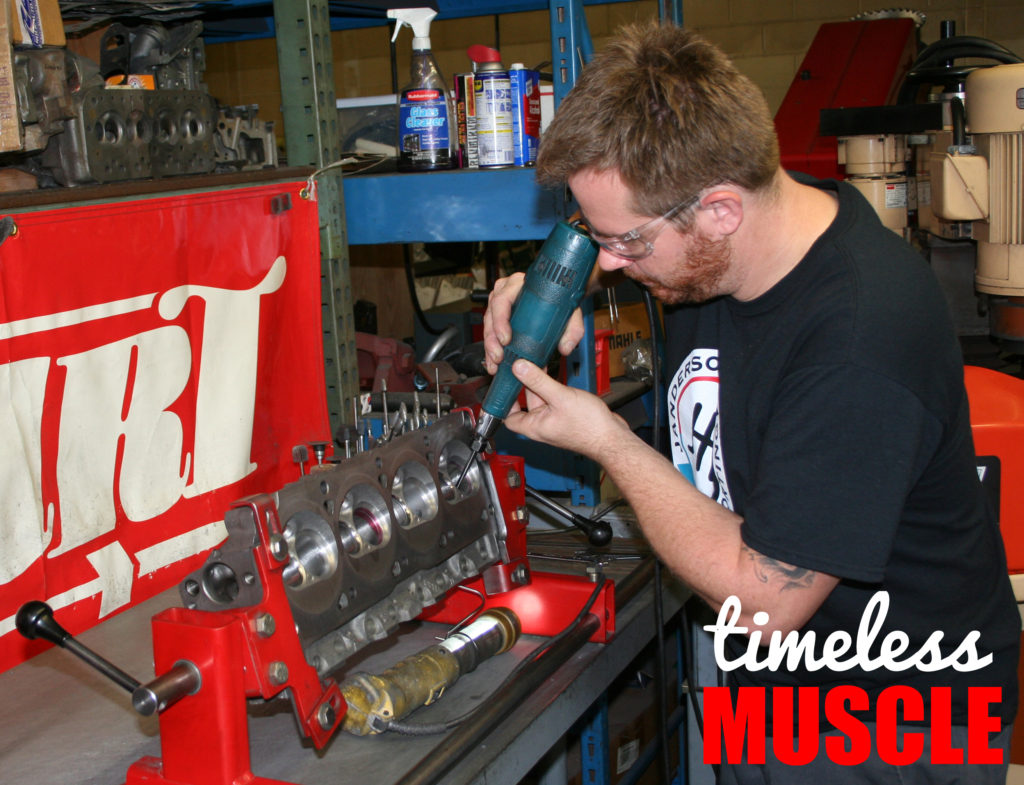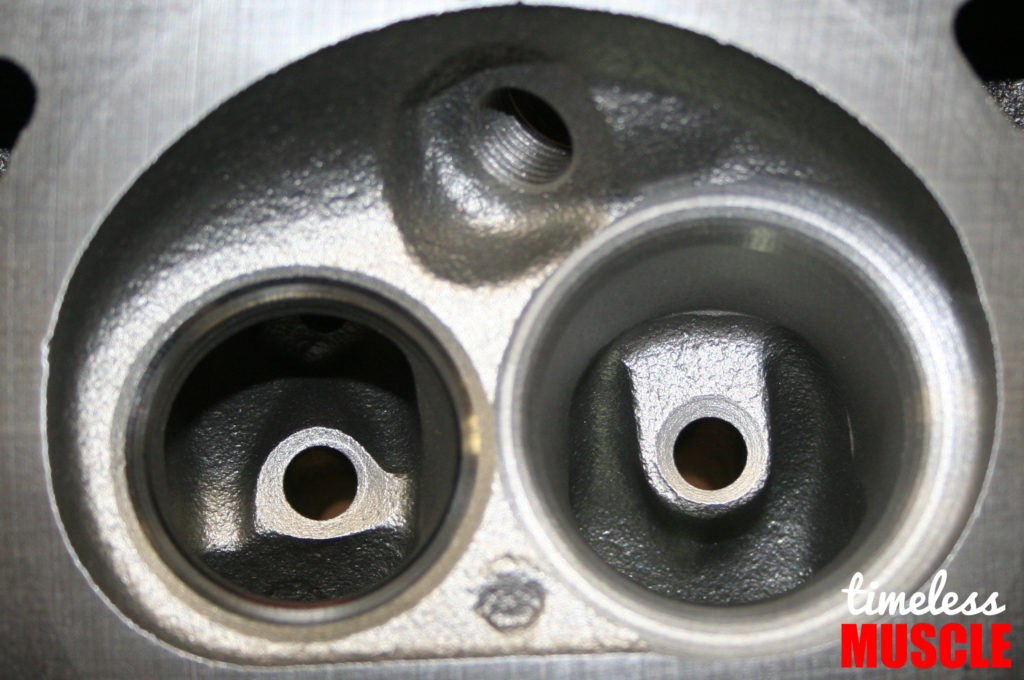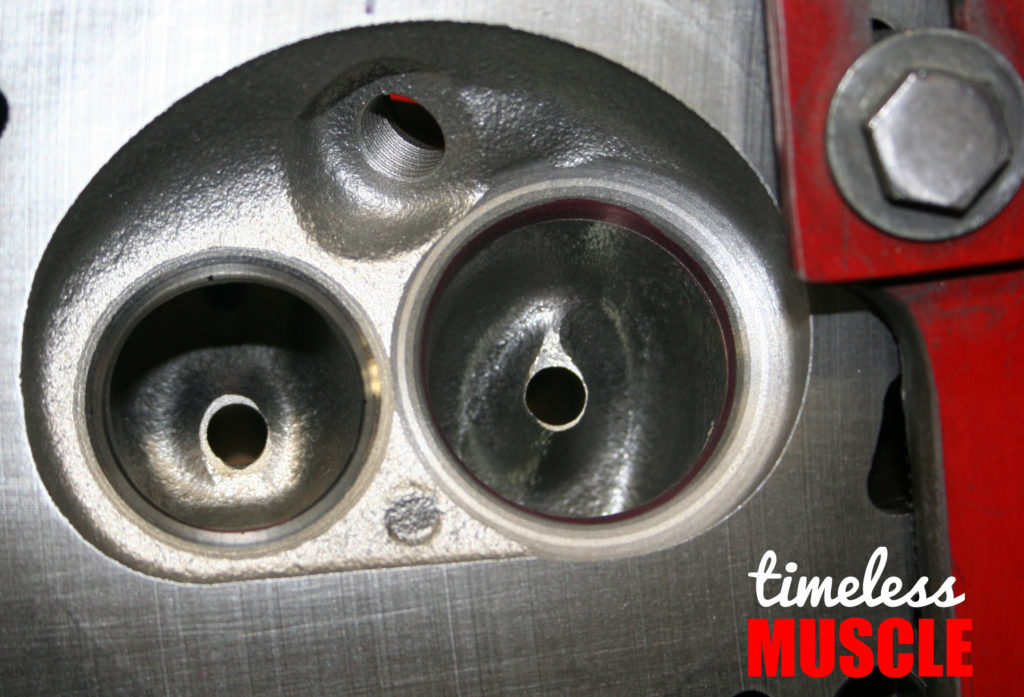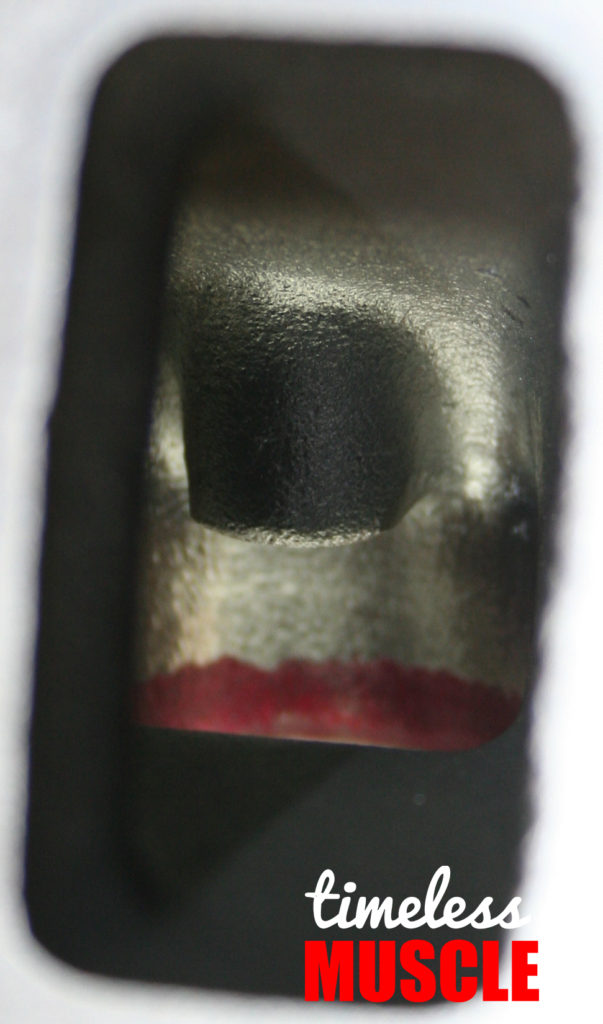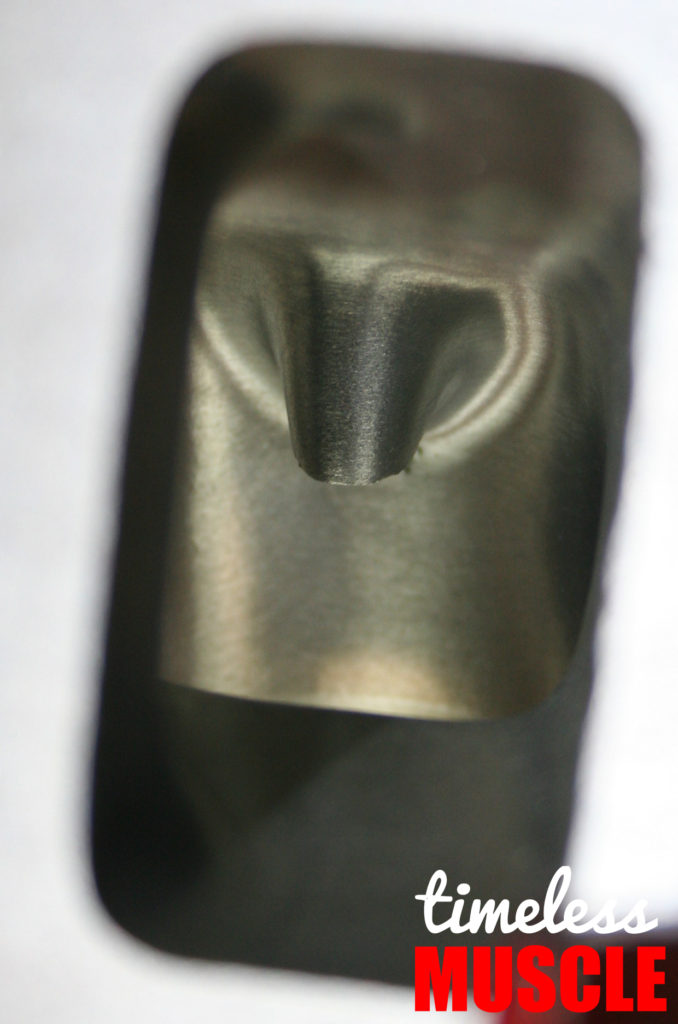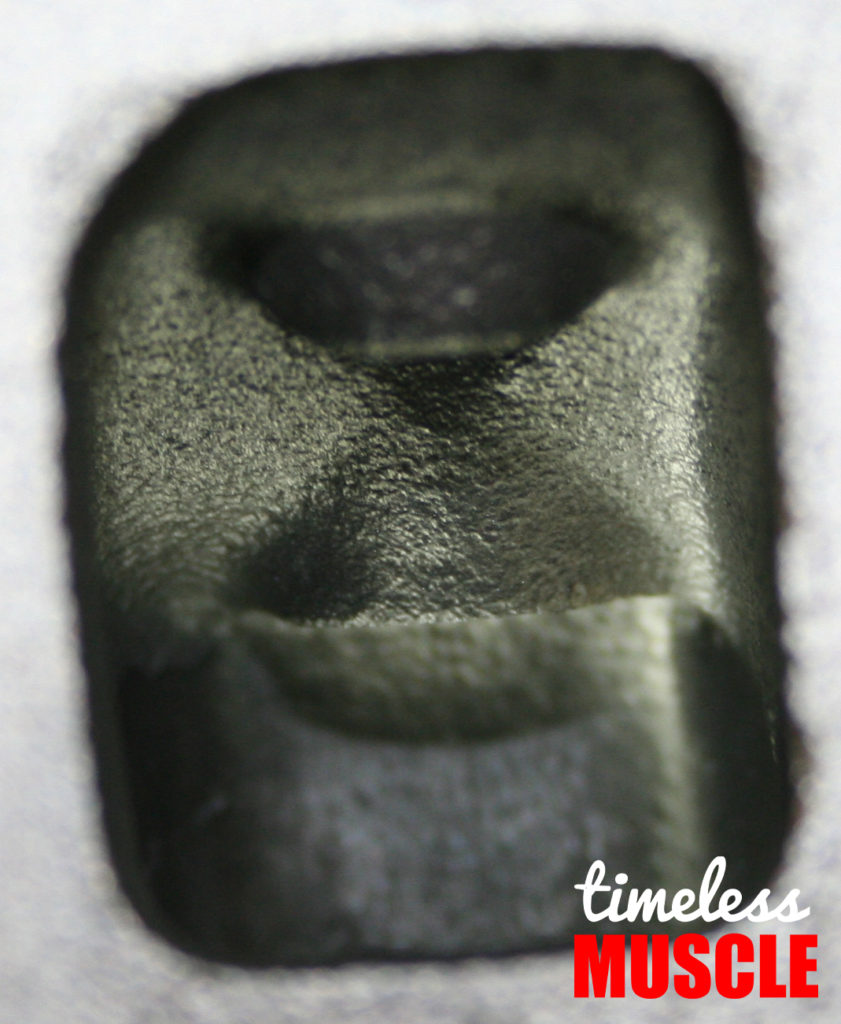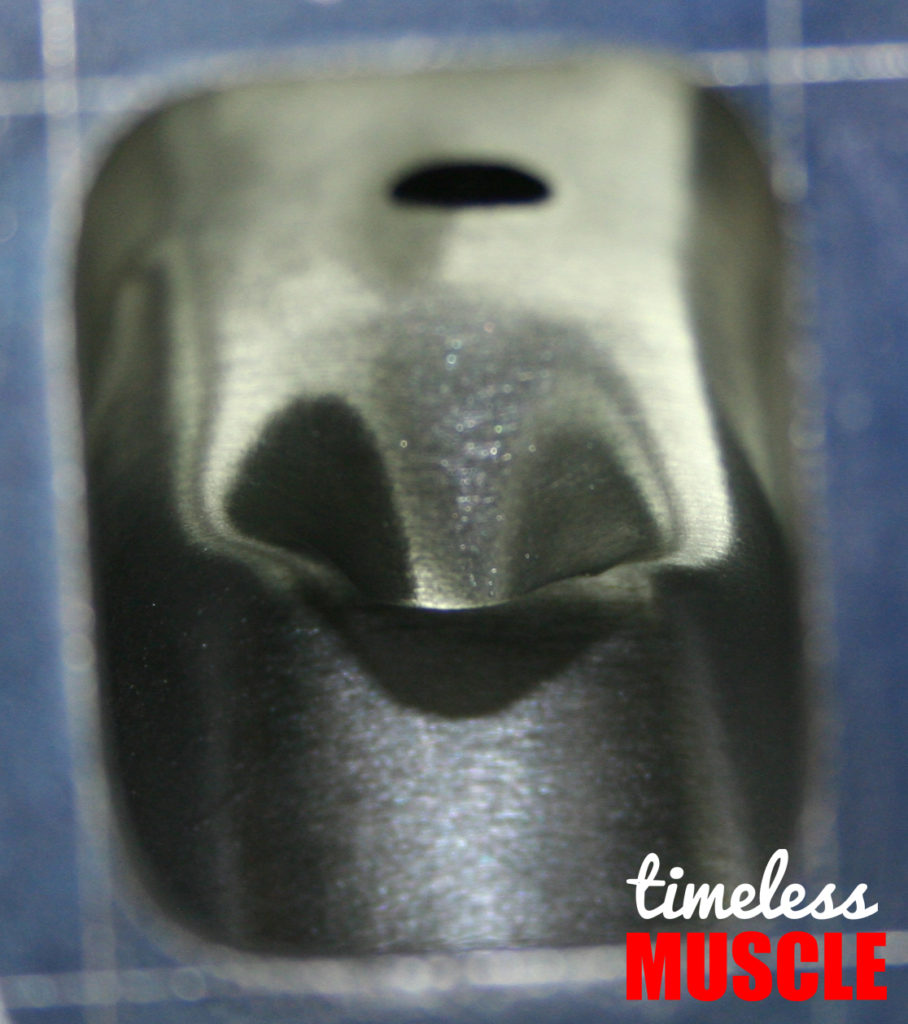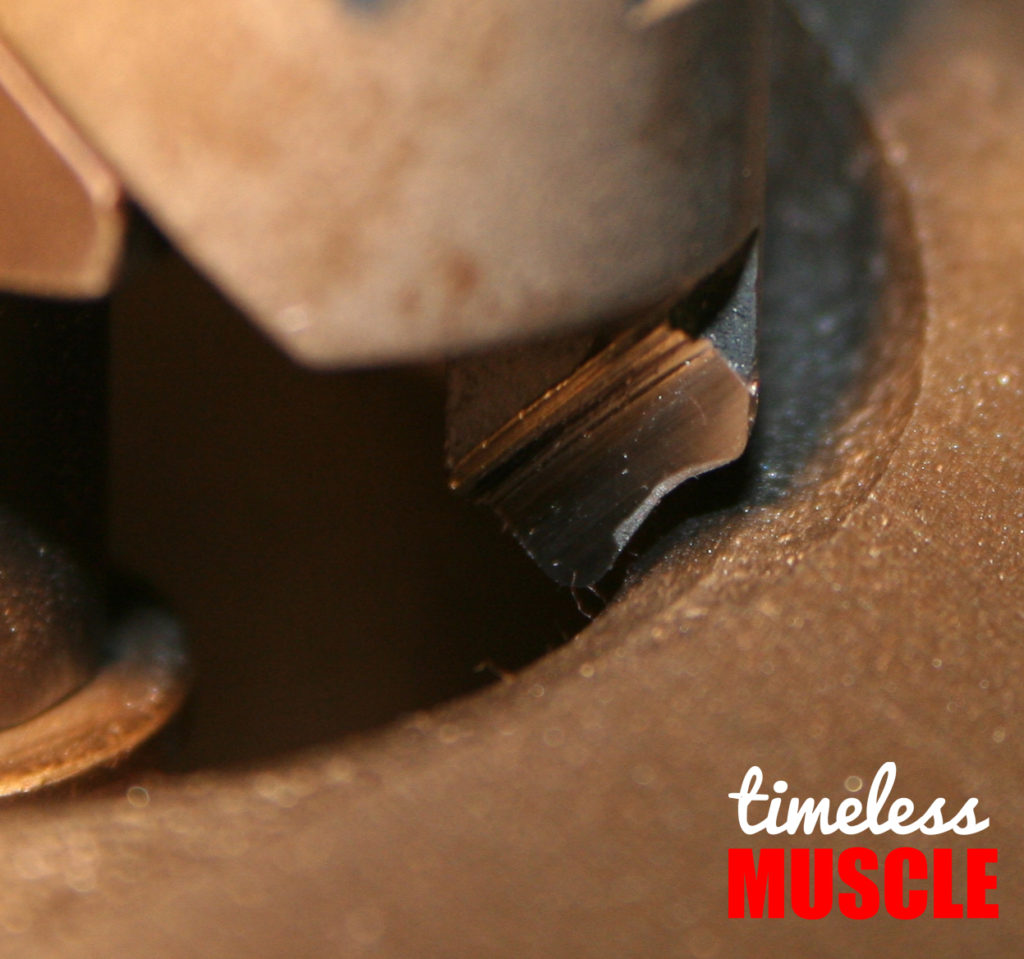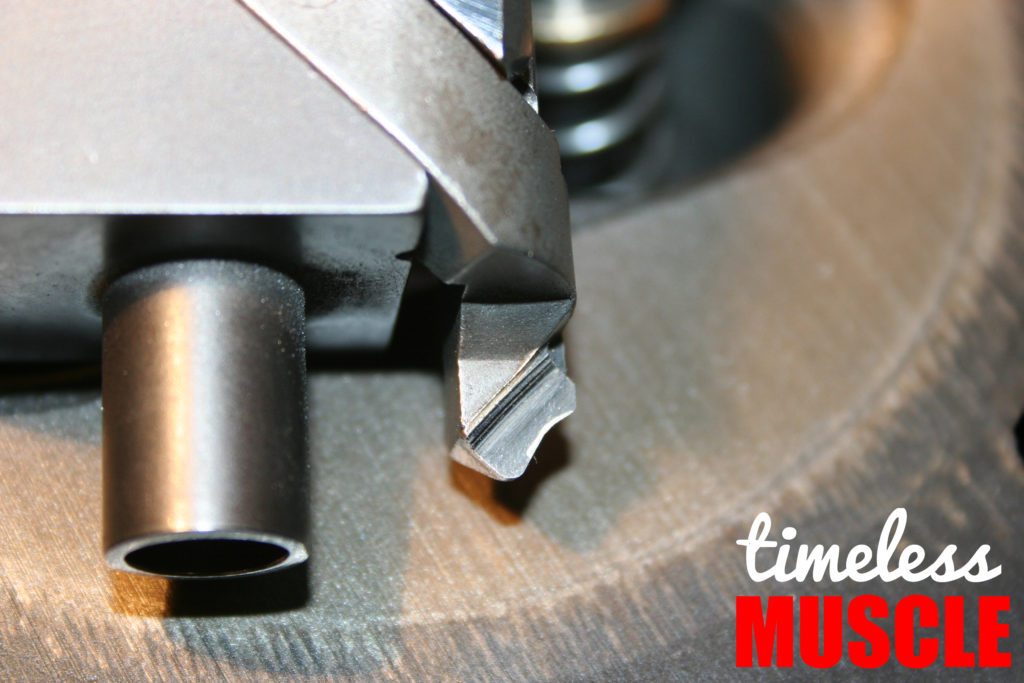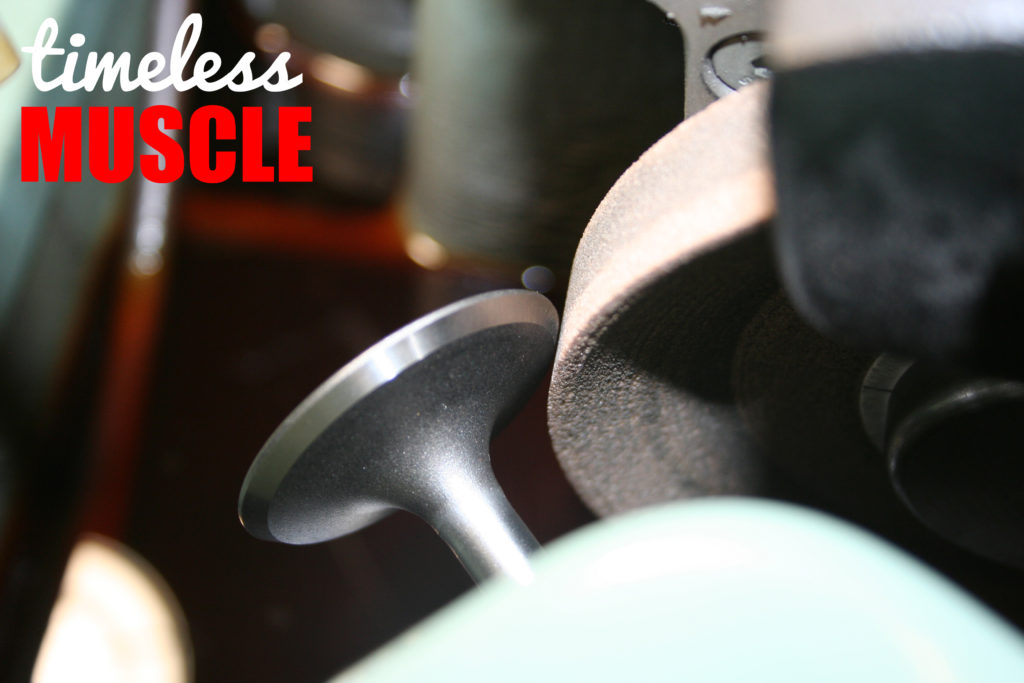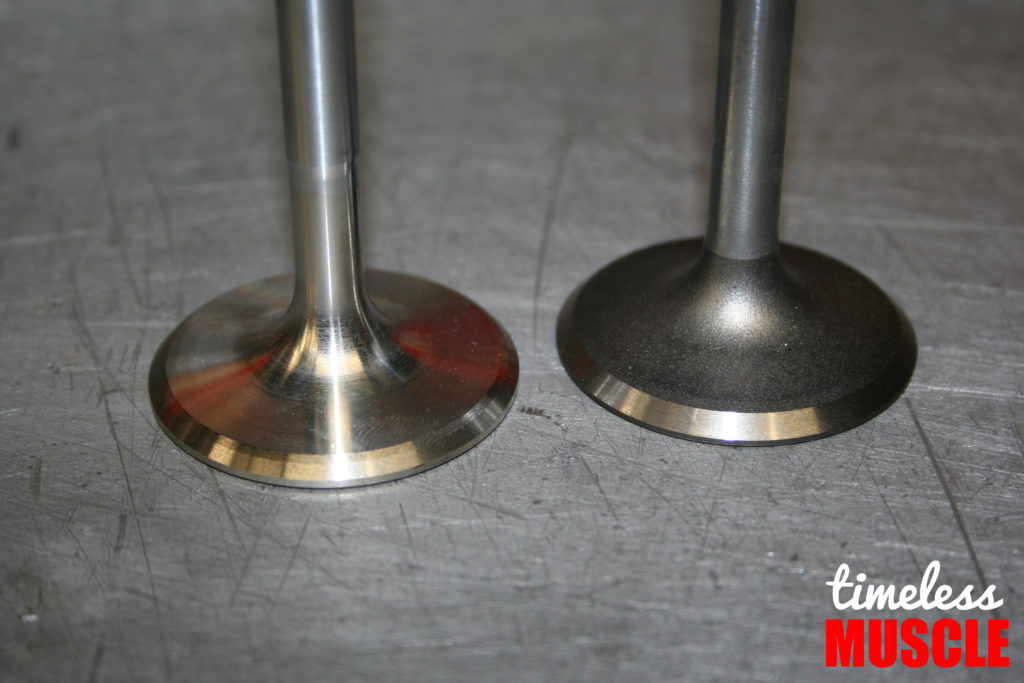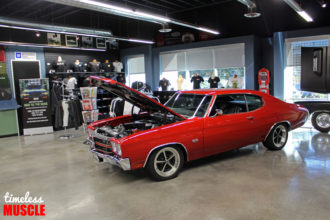Finding Hidden Power Through Cylinder Head Porting
Photos by: the Author
Free horsepower is hidden in your engine’s cylinder head ports. It’s just waiting to be unleashed, but doing so requires a careful hand. Surely, porting experience will help, and practice surely makes perfect. Professional cylinder head porters and intricate CNC-based programs to optimize port sizes and shapes exist for good reason. However, if you are careful and have both a steady hand and some patience, we can show you how to get a good percentage of that power yourself. You’ll need some basic grinding tools and measuring instruments, which most hot-rodders have anyway. Are you ready? Let’s pull back the curtain and show you where the free power is hiding.
INTAKE vs. EXHAUST PORTS
An engine’s exhaust port typically only needs to flow between 80-90 percent of what the intake port flows. Because an engine inhales both air and fuel, and exhales only air and spent fumes, the exhaust port doesn’t need to be as effective. Also, the exhaust gases are much hotter than the incoming air/fuel mixture, and the hotter gases will be more anxious to find their way out. This is also why exhaust valves are smaller than intake valves — the chore of getting spent gases out of the combustion chamber is less of a hassle than forcing cool, moist, air/fuel mixture into the chamber. However, the ratio between the intake and exhaust ports must remain relatively constant. If you increase the flow through the intake port, you’ll also have to increase the flow on the exhaust side to compensate and keep the balance between them correct.
That being said, the intake side is where most of the effort is focused because of the challenge it presents. The intake port is a challenge because of its typical shape and the task at hand. Air must enter the intake tract, pick up a dose of finely-misted fuel, and carry it down the intake port and around the intake valve to finally get into the chamber. The challenges are many, but among them are:
- Fuel wanting to fall out of suspension and puddle on the port walls
- The changing shape of the port from the intake manifold to the head to the valve
- The changing rate of travel for the air/fuel mixture as engine rpm increases and decreases
- The changing rate of travel for the air/fuel mixture as the intake valve opens and closes
- The air/fuel mixture traveling around the short-side radius of the port, the valve guide boss, and valve stem
- Getting around the valve head and valve seat to get past the valve
- Once past the valve and in the chamber, what happens to the air/fuel mixture as the piston travels downward
Each one of these challenges is stealing horsepower from you.
Air and fuel travel down the intake port much like a stream travels down its path. Think of how a stream flows for moment. Where does it travel the fastest? Right in the center, at the deepest point. Where does it travel the slowest? At the edge, where friction from the bottom and the shoreline both serve to slow down the flow. What happens in a curve in the streams path? The inner, tighter part of the turn comes to a virtual standstill, while the more gradual curve on the outside edge flows much faster. Still, the center of the pathway remains the fastest-moving part of the stream.
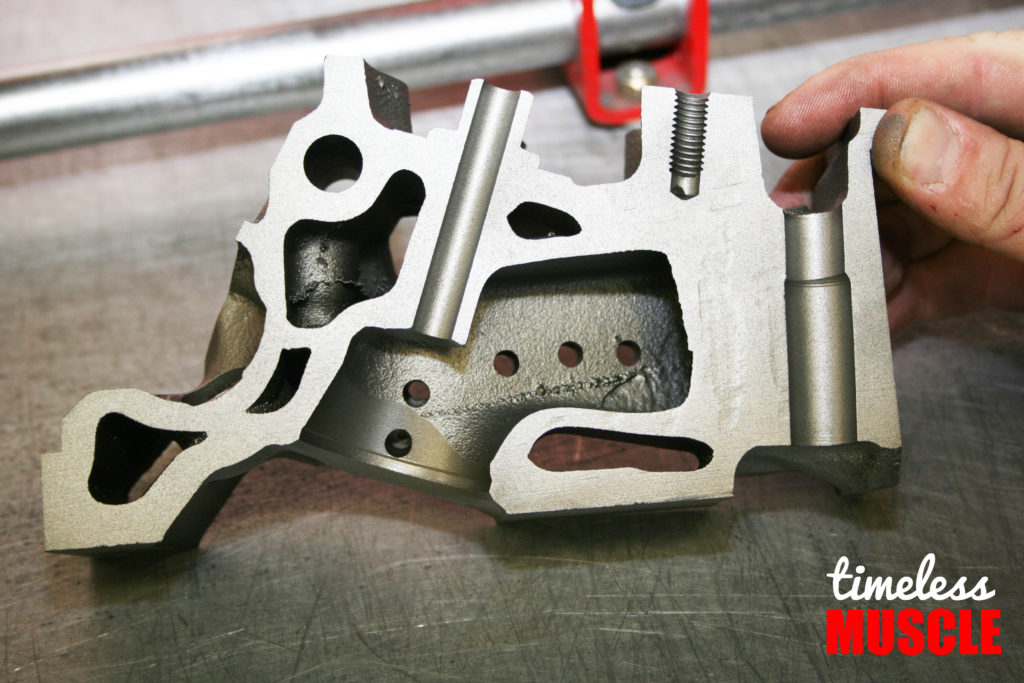
To make more water flow down the stream, the immediate answer seems to be to widen it, or deepen it, or both. Similarly, making the intake port larger should be the easy ticket to greater flow, right? No — sadly it doesn’t really work that way. We have to remember that while our comparison to a stream is a good way to understand the basic challenges of flow, the end of the stream in our intake port is the intake valve.
That valve will open and close, and its diameter won’t change but the amount it’s open varies almost constantly. How can we maximize the flow through this ever-changing opening? Only by improving the overall quality of the flow passing through the port! The best way to accomplish this at home is by focusing on the big stuff. Removing any obvious casting imperfections (called “flash”) that are hanging off the port wall into the airstream is a good place to start.
- As manufactured, the intake and exhuast ports are clogged with rough surfaces and thick casting bosses around the valve guides.
- After working his grinder magic, the port walls flow smoothly, and the bosses on both the intake and exhaust sides are smaller and much more aerodynamic. This work really encourages airflow in and out of the engine.
To increase the volume of air moving through the ports, enlarging them is the natural move. Let’s consider that the port is a tunnel, and we’re trying to increase the size of the “sweet spot” in the center, where (like the stream) the very center portion is the area of highest efficiency and the greatest speed. Research has shown that it’s most effective to raise the roof a little, versus widening the walls or dropping the floor. The best way to do this is to use the appropriately sized intake manifold gasket as a template, carefully finish one port a couple of inches in, and take some careful measurements. Duplicate the internal dimensions on the rest of the intake ports, and you’re on the way.
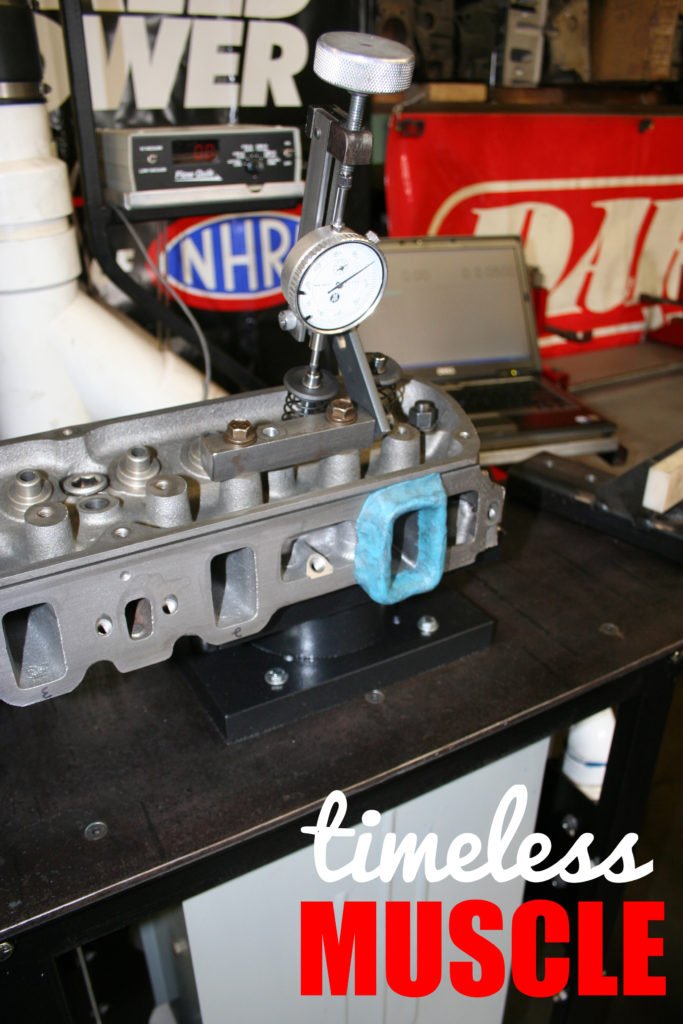
More serious porting work requires more exotic and precise tools. Chief among them would be a flow bench — a tool that draws air in through the intake ports and out through the exhaust ports, measuring the airflow at select valve openings to measure the efficiency of the port, valve, and seat design. These are not simple devices and require either solid skills to build one or decent money to purchase one. Unless you’re considering port work on a professional level, it’s probably more of an investment than you need to make.
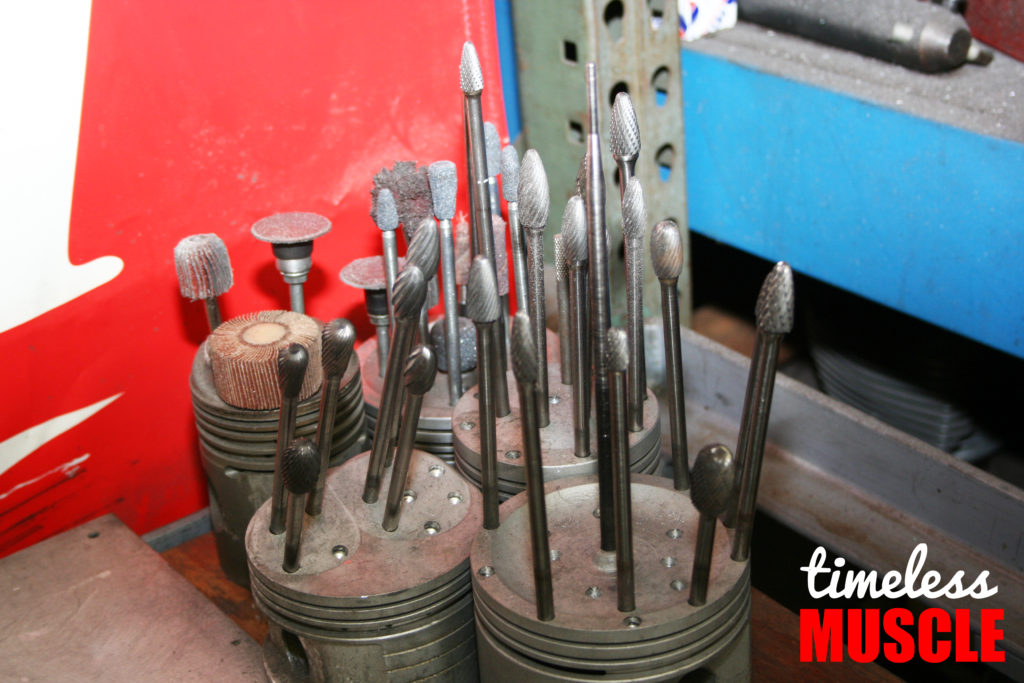
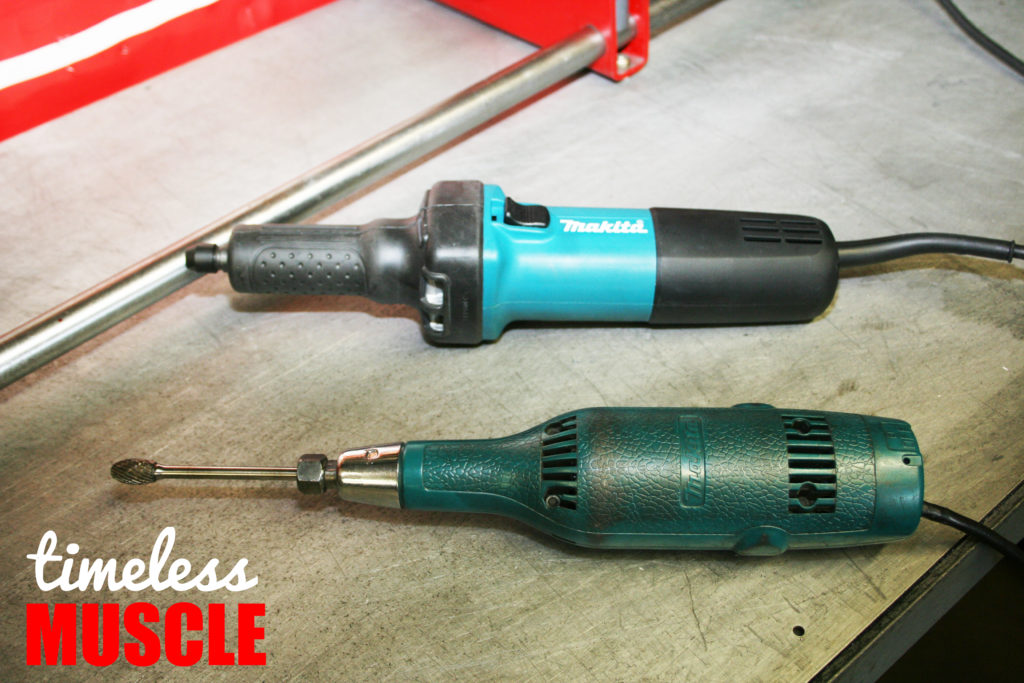
We teamed up with Jason Anderson at Janderson Heads to go over some of these basics. Jason shared some great pointers with us, using a common small-block Ford Windsor E7 head as an example. This is a good choice, since these E7 heads have some performance potential, and are readily available and affordable. Additionally, small-block Fords like this have identical chamber designs from cylinder to cylinder, versus other cylinder head designs that move the order of the ports from cylinder to cylinder (like the small-block Chevy, or traditional Pontiac and Olds V-8s) or a design where there are differences in intake port design or length from cylinder to cylinder (like the big-block Chevy), which makes the challenge of having every cylinder flow evenly that much more difficult.
- Looking down the intake port of the stock head, we can see how fat the valve guide boss is and how it really fills up the port. Also, the port walls, floor, and roof are all pretty rough.
- After the port gets the Janderson treatment, it’s much smoother and flow is less encumbered by the rough casting and oversized valve guide boss.
So, Jason left one cylinder alone, and did a nice port and polish job on another so we could clearly see the differences. He did all the basic upgrades on both the intake and exhaust sides, including resizing of the port, refinishing the inside surfaces of the port walls, reshaping the valve guide to improve aerodynamic flow around it, and performing a 3-angle valve job.
- The exhaust port looks even rougher than the intake in its “as-cast” condition. Remember, these are really good factory performance heads, too!
- It’s almost hard to believe this is an identical port in the exact same head. The exhaust flow is greatly enhanced by the port work accomplished here. Multiply this effort times 8 (in this V-8 application) and you can see how work like this can measurably improve performance.
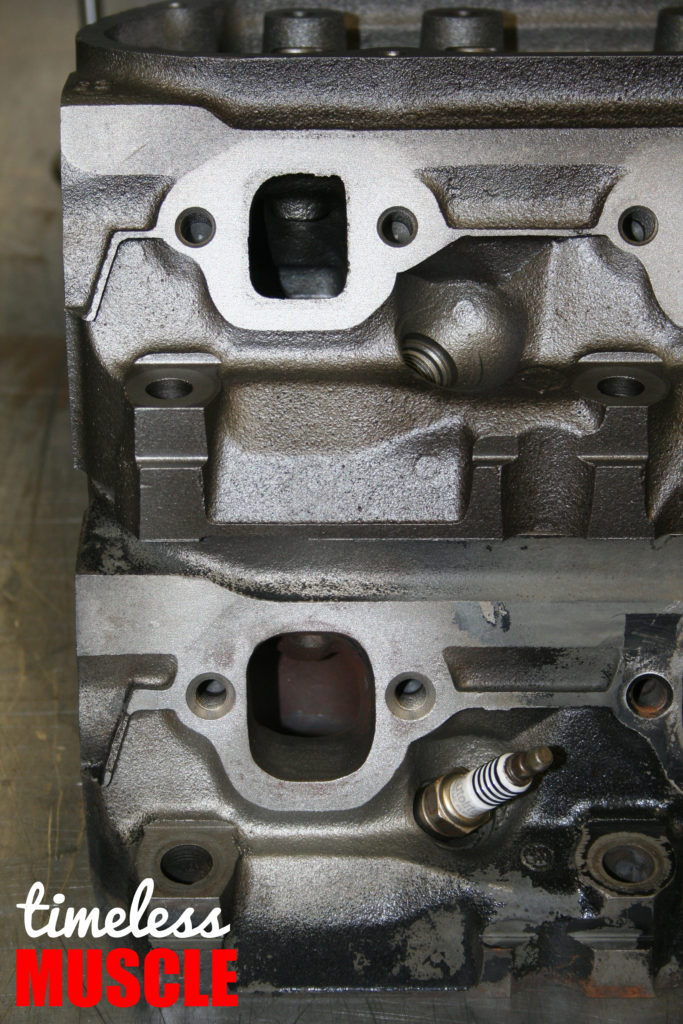
The valve job addresses the critical surface where the valve meets the head and seals it. This critical seat area has been found to perform best when treated to a gentle transition from port to chamber, and the 3-angle method is accepted as the best affordable method for street engines. We’ve seen competition engines with as many as 7 separate angles machined into them, but the added cost of these processes doesn’t justify the investment at the low rpm levels street engines typically run at.
- A professional 3-angle valve job is cut into each valve seat with a dedicated cutting machine. All three angles are machined into this cutter, and it’s depth is carefully measured and equalized in every chamber so all the valves are at the same depth.
- This is what the cutter looks like when removed from the tooling. You can see each distinct cutting angle on the blade. The large tube to the left uses the valve guide as an alignment point to perfectly center the cutter in each valve seat.
The valves themselves are also a potential sticking point. Factory valves are purchased in huge quantities and their performance is not always the highest priority. Upgrading to a lighter, stronger performance valve, typically in a bit larger head diameter to encourage more flow, is standard fare in performance headwork. Choosing valves where the stem necks down slightly is also common, as a stronger valve can live with a slightly skinnier stem. Since air must flow around the stem, a thinner one offers less resistance to airflow.
If you are able to have the heads flow-tested on a bench, you’ll be able to see exactly how much air your heads flow at specific points, and use this information to tailor the rest of your parts choices. If you learn that your heads flow great at .500-inch, but fall off dramatically at .550-inch of valve lift, you won’t want to purchase a cam that opens the valves up to .575-inch, right? Building your engine around the capability of the cylinder head means it will all work as an engineered package.
- The valve sits flush on the seat on the largest of the three angles. The valves are machined using a valve facing tool to ensure the surface mates perfectly to the valve seat.
- The high performance valve on the left will replace the factory valve on the right. In addition to having a larger diameter head, it is lighter, stronger, and flows better as a result of improved shape on the back of the valve and a smaller diameter stem. Look carefully at the transition from the stem to the valve head- that additional machining improves the flow around the valve.
Adding all of these modifications can result in measurably greater flow at the sub-.600-inch lift points muscle car engines typically see. Real power gains can be found as a result of the increased flow potential both in and out of the engine, particularly when an improved intake manifold design, camshaft and exhaust headers are added around the improved heads.
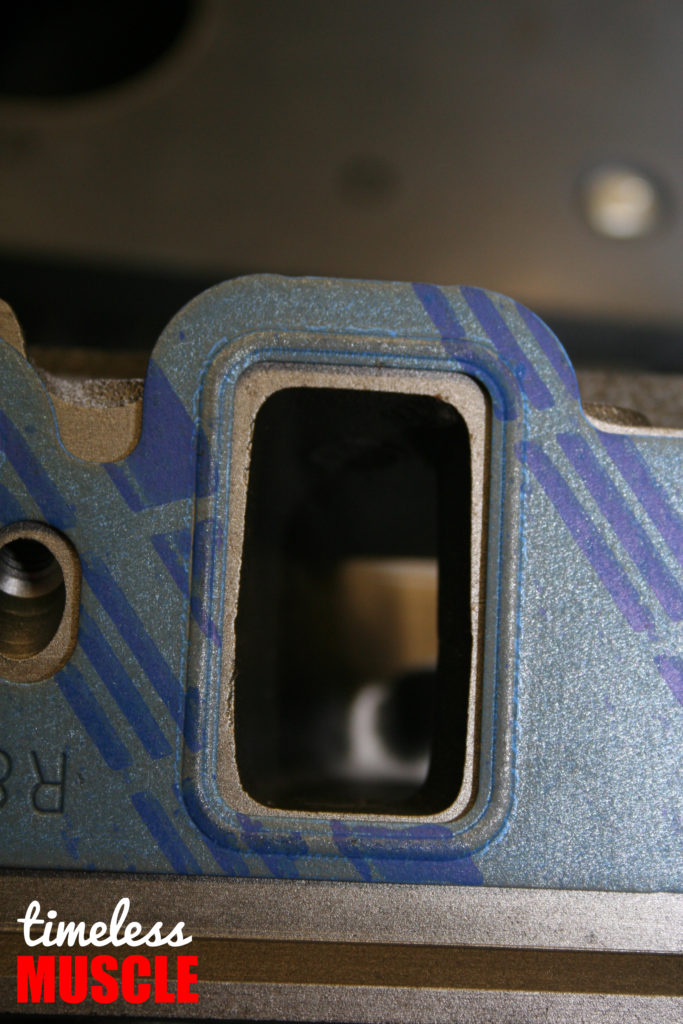
You’ve surely heard of “port matching” intake manifolds, too. This process uses the intake manifold gasket as a template and allows the porter to make the intake port sizes match up nicely to the cylinder heads. If the intake ports are just a little smaller than the ports in the heads, it works best. Remember our example of the stream flowing, with the resistance along the edges? If the intake is feeding into the sweet spot away from the edge of the port, it can make even more power by finding increased efficiency. That’s just free power waiting to be found, and by carefully working to make your engine work better, it will make more power and your muscle car will be faster as a result. That’s what it’s all about!
After spending almost a decade in the aerospace industry, Scott Parkhurst chose to learn about racing engines by working in some of Southern California’s most respected engine shops. He took on the role of Tech Editor at Popular Hot Rodding magazine back in 1998, and was instrumental in the development of both the Engine Masters Challenge competition and Engine Masters Quarterly magazine. He was also the founding Editor of Street Thunder magazine and Author of the V8 Horsepower Performance Handbook before he arrived at Timeless Muscle.








